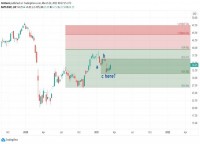|
By Mark Melin 
Author Andreas Clenow operates a CTA, Globalanced Systematic, and has conducted robust analysis of various trend following strategies.
"My initial thought in writing the book was to do something different. I didn't want to tell hero stories about the successful people in the managed futures industry but rather discuss the core strategies and the math supporting it." The book outlines not only the basis for a trend following strategy but also discloses how he manages his own managed futures CTA, "Globalanced Systematic. "You can't just have one strategy in a fund any longer," he said, referring to early trend followers who adopted the simple moving average cross method of trend following epitomized by Richard Dennis and the famous "Turtles." Early turtles utilized a single formula and executed the strategy across various markets. Some CTAs, such as David Harding of Winton Capital, adapted their core trend following strategy with new models while others, such as the now defunct CTA John Henry, remained true to the basic single formula moving average cross trend following model. "There are two main strategies in my mind. Trend trading and counter-trend trading," he said, a controversial statement particularly for those who operate relative value, carry trade or volatility strategies. "One strategy is more prominent than the other. The big strategy where returns are most significant is trend following, but that is also the most volatile strategy. Trend following is the most important for sure." For his CTA fund, Mr. Clenow operates a counter-trend overlay on top of the trend following model. He doesn't like to combine strategies into one algorithm but rather keep trend models separate. In other words, the trend following model could be long while the counter-trend model could sell the same commodity. "Counter-trend trading can carry additional risk and I run tighter stop loss parameters," Mr. Clenow noted, citing proprietary studies he has conducted. "Counter-trend trading is not as profitable as trend trading, much less interesting as a standalone strategy as it is when combined with a trend strategy." Mr. Clenow noted the time horizon in counter-trend strategies are typically of a shorter trade duration and have a higher expected win percentage than trend trading. "It is a hit and run strategy," he said noting the smaller win size. "In trend trading I'm happy winning 30% to 40% of the time. When you win in trend following the size of win can be most significant." When he designs an algorithm Mr. Clenow attempts to identify points in a market lifecycle when participants, either buyers or sellers, may be experiencing pain and thus overreact to market conditions. (This is typically accomplished through analysis of volatility, price movements, range expansion and sometimes trade volume.) What does the author consider his most interesting chapter of the book? In chapter seven on reverse engineering Mr. Clenow considers the core strategies of many well-known names in the managed futures industry, including Sunrise Capital, Transtrend and Mulvaney, and attempts reverse engineering. Reverse engineering of managed futures strategies has been a hot and valid topic of debate, as academics such as Thomas Schneeweis (CAIA founder and University of Massachusetts scholar) among others engaged in attempts to de-construct strategies while top CTA managers maintain their entry and exit points as well as risk management formulas make them more efficient at capturing beta and their algorithms cannot be easily copied. "In chapter seven I wanted to show that you can modify a simple trend following strategy with time frame, risk parameters and asset allocation and you can mimic most trend following systems in the market," he said. While looking at managed futures performance sometimes makes the investment seem like an easy ride, Mr. Clenow also wanted to show how difficult managing volatility in the strategy can be. "Investors need to understand they may have to endure pain to achieve long term gain," he said, noting that monthly returns may mask daily CTA volatility. "Sometimes negative volatility is the price investors pay for returns." |
|
This article was published in Opalesque Futures Intelligence.
|





 RSS
RSS









